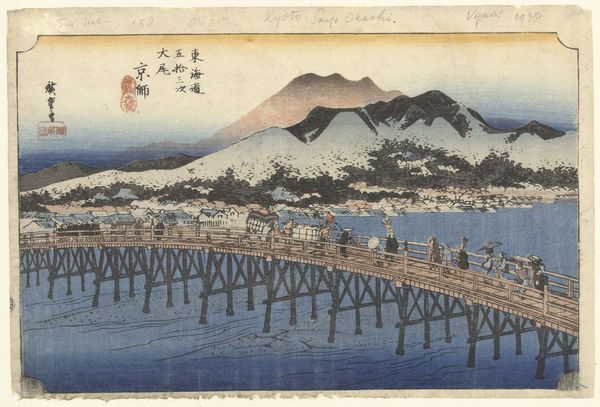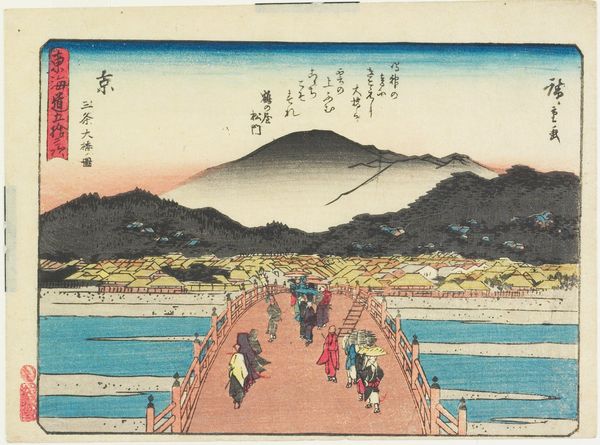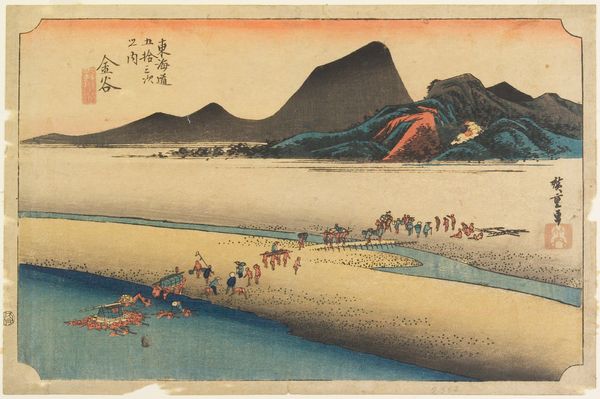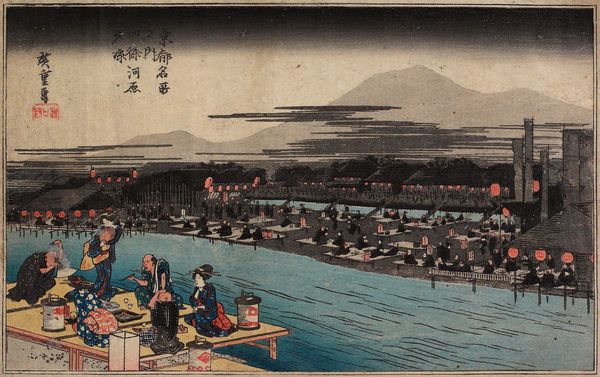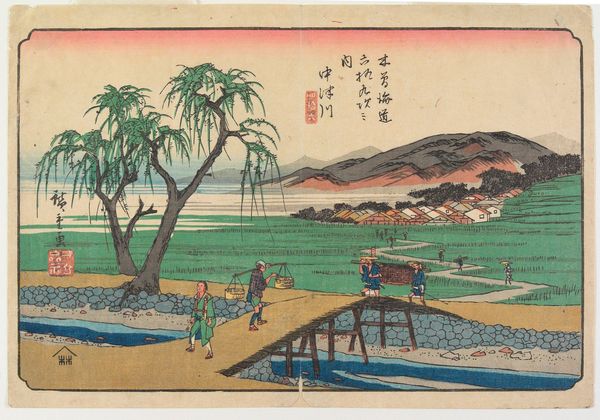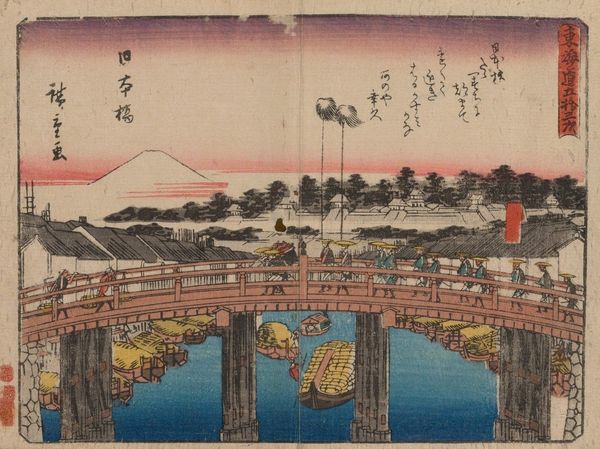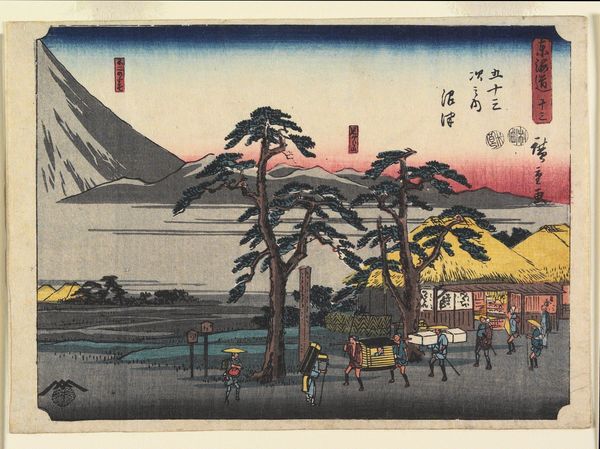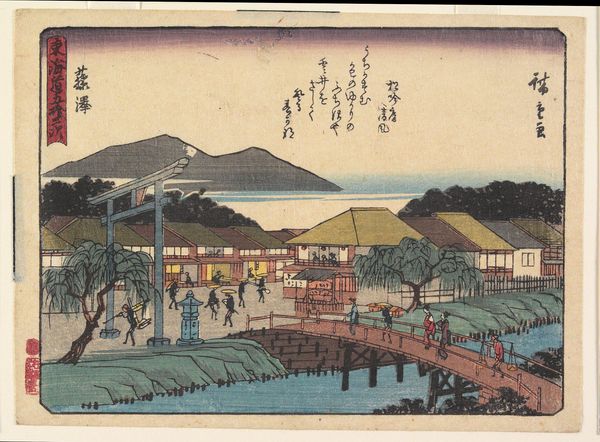
print, ink, woodblock-print
# print
#
asian-art
#
landscape
#
ukiyo-e
#
ink
#
woodblock-print
Dimensions: 8 7/8 × 13 3/4 in. (22.5 × 34.9 cm) (image, sheet, horizontal ōban)
Copyright: Public Domain
Editor: This is Utagawa Hiroshige's woodblock print, "Kyoto," created around 1832-1833. The detail in this landscape scene is striking; I’m especially drawn to how the bridge creates such a strong horizontal line. What do you see in this piece? Curator: The compositional structure is indeed compelling. Note the rhythmic repetition of the bridge's supports, creating a visual pulse that draws the eye across the water and up toward the mountain. Consider the contrast between the hard, geometric lines of the bridge and the softer, more organic forms of the landscape. Editor: So, it’s about contrasting forms. How does that affect the overall feeling? Curator: Precisely. The angularity of the bridge suggests human intervention and order, while the mountains evoke a sense of nature's power and permanence. How do the gradations of colour impact your reading of the scenery's depth? Editor: The light hues in the sky certainly create a feeling of vastness, emphasizing the depth and distance... And there’s also something subtle, almost geometrical about the clouds as they seem to mirror the structure of the bridge. Curator: An astute observation. It brings us back to that deliberate interplay between geometric and organic form. Now, notice how these formal elements interact – how might the arrangement affect a viewer's spatial awareness and subjective experience of place? Editor: Thinking about how the bridge interacts with nature really offers a complex visual journey through the artwork. I had not thought that formal properties, in themselves, might open the doors for a greater understanding of a landscape's form and composition. Curator: Indeed, and that rigorous approach ultimately allows you to engage deeply and form your personal, intellectual, and artistic judgments, revealing meaning within these formal decisions.
Comments
No comments
Be the first to comment and join the conversation on the ultimate creative platform.

